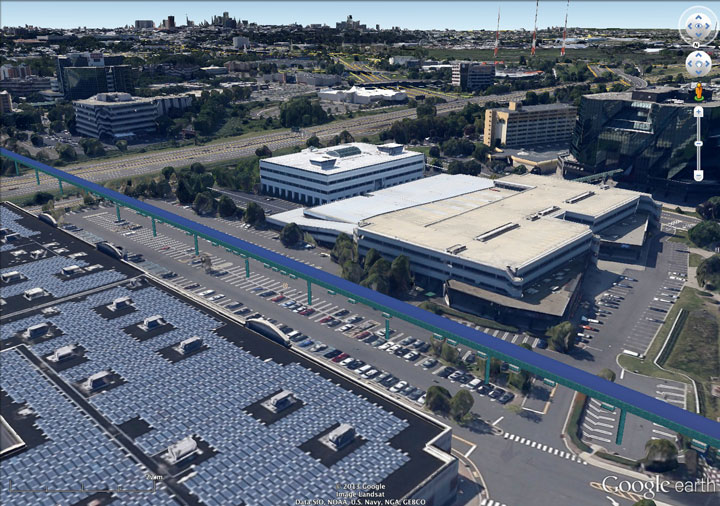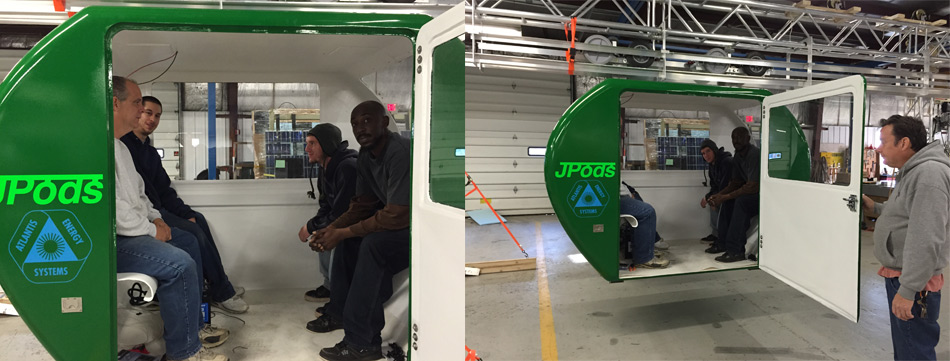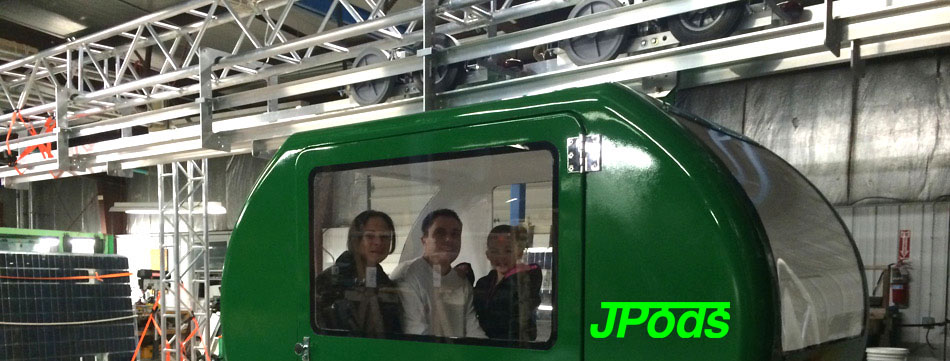- Home
- About
- Advantages of JPods
- Capacity
- Conservation
- Economics
- 10X Capital Savings
- Base the $ on Energy
- Dangerous Economic Assumptions
- Free Markets
- Jobs
- Land Use
- Linear Barriers to Commerce and Nature
- Metrics: Replace GDP with Disposable Energy
- Parking
- Supply_Demand
- Free Market Efficiency
- Net Energy Decline
- Inaccurate IEA Forecasts
- 'Titanic' Oil Economy
- Paychecks and Oil
- History
- Lifeboat Paradox
- Links
- Management Team
- Metrics
- Payback
- Peak Oil
- Project Flow
- Recipe
- Solar
- Technologies
- What are JPods
- Why JPods®
- Be Involved
- Key Steps
- Franchise Agreement (draft)
- Solar Mobility Act
- Own and Operate a JPods Network
- Become a JPods Supplier
- Design Your Own JPods Network
- Investors
- Spread The Word
- 8-80 Cities
- Agreements
- Cities of the Sun
- Domestic War by 2023
- Kitty Hawk Network
- Regulation
- San Jose State
- Scale Model
- Railroad 1862
- News
- Cities
- Contacts
You are here
Secaucus
NJDOT is blocking efforts to build solar-powered mobility networks in Secaucus. Example email, Dec 18, 2014. There were subsequent meetings with Governor Christie's staff. Presentation given NJDOT on how $23 biillion/year of the $35.8 billion traffic costs the people of New Jersey can be recovered as customer savings and value to privately fund deploying solar-powered mobility networks:
The NJDOT has reviewed PRT systems in the past and concluded that there is currently no practical application for these types of systems on either State or Interstate highways.
Thank you for sharing the information provided to Mr. Dube.
Joseph D. Bertoni
Deputy Commissioner
This Administrative decree seems to violate the intent of the New Jersey Legislature as stated in NJ Law 2004-A2031:
c. It is in the State's economic interest to investigate new types of service which may improve the usefulness and integration of existing platforms, provide fast, inexpensive travel options, reduce capital costs of projects, and reduce pollution from motor vehicle travel. Personal Rapid Transit (hereinafter “PRT”) is one such technology currently being made available.
d. According to the Federal Transit Administration, average capital cost per two-way mile for heavy rail is $150 million, and for light rail is $70 million. For operating cost per passenger mile: heavy rail is $1.20, light rail is $1.80. However, PRT has the potential to cost 37 much less than heavy and light-rail applications, carry high capacity, be flexibly located, and require much less physical "footprint," potentially reducing easement impact for currently scheduled projects. PRT studies have shown a capital cost of about one-tenth the cost of existing rail technology, with similarly low operating costs.
Safety Record
Article from Oct 13, 2016 Boston Globe: NJ Transit leads list of accidents, safety fines
We the People, form governments to coerce compliance to law. The Governing do not hold themselves accountable for violating laws. Any priviate company would be subject to criminal charges with the safety record of NJDOT. Yet the Governing in New Jersey use police powers to protect their commerical monopoly from free market competition and to declare sovereign immunity for their safety deaths. Sovereign immunity should be removed. Background on the nature of government, the Monopoly of Violence.
The validity of these statement is proven by the 110 million oil-free, injury-free passenger-miles achieved by the PRT network in Morgantown, WV. The Morgantown network pays for itself about every 5 years (independent audit).
NJDOT rejects privately funded innovation that might save the people of New Jersey more than half the 560 lives lost per year and $36.8 billion per year in traffic costs:
- $13.4 billion per year for gasoline (462.9 trillion BTUs, 114,500 BTUs/gallon, $3.30/gallon).
- $14.8 billion per year on accidents
- $8.6 billion per year on congestion
Presentation to Governor Christie's staff and NJDOT:
Since opening in 1975, the PRT network in Morgantown, WV has delivered 110 million oil-free, injury-free passenger-miles. Morgantown's PRT is self-regulated, so it does not have a viable standard that can be applied to new systesm. However, the ASTM International standards from the theme park industry has a safety record approximately 80,000 times better than DOTs, well established insurance, and inspection enforcements. The Secaucus Ordinance 2014-23 uses the well established ASTM standards as the basis of regulation.
On June 24, 2014 Council for Secaucus, NJ passed Ordinance 2014-23 making Performance Standards (download) for sustainable infrastructure the law. We believe Secaucus' leadership will set a world standard in governing to solve congestion, oil-dependence, and climate change. Access to non-exclusive use of rights of way are based on:
- Constrution must be privately funded.
- Systems must operate without government subsidies.
- Efficiency must exceed 120 passenger-miles per gallon.
- Safety must exceed transport modes already granted use of rights of way.
- Environmental approvals will be based on energy saved relative to modes already granted use of rights of way.
- Regulation will be by theme park standards (ASTM Technical Committee F24) with a safety record thousands of times better than highways.
Repeat success of Secaucus:
|
Because of the leadership in Secaucus, JPods will start building a mobility infrastructure with access to all, regardless of age, ability, or wealth. People and cargo can move on-demand without congestion. Each pod in the network will exceed 260 passenger-miles/gallon, won't emit green house gases, and will be 1000 times safer than traveling in cars on the streets below.
Background documents
- A_Secaucus Law 2014-23, Performance Standards. This law applies to transport infrastructure the frame work that ended the century of rotary telephones in communications. It restore transport infrastructure to free markets.
- B_2004-A2031_NJ Legislature Law Directing the Study of PRT. This law is vividly clear in its instructions to NJDOT:
As new technologies have been made viable, the State has benefited from being an early adopter....
It is in the State's economic interest to investigate new types of service which may improve the usefulness and integration of existing platforms, provide fast, inexpensive travel options, reduce capital costs of projects, and reduce pollution from motor vehicle travel. Personal Rapid Transit (PRT)....
According to the Federal Transit Administration, average capital cost per twoway mile for heavy rail is $150 million, and for light rail is $70 million. For operating cost per passenger mile: heavy rail is $1.20, light rail is $1.80....
The transportation system of New Jersey may benefit greatly from fostering a niche role for profitably managed rapid transit as a supplement to its current system. It is in the State's interest to consider the integration of PRT into its transportation system
NJDOT is equal clear in it disregard for both NJ 2004-A2031 and Secaucus Ordinance 2014-23 as stated on Dec 18, 2014:
Dick Dube provided me with your latest e-mail marketing your JPOD Personal Rapid Transit (PRT) system. The NJDOT has reviewed PRT systems in the past and concluded that there is currently no practical application for these types of systems on either State or Interstate highways.
Joseph D. Bertoni
Deputy Commissioner
- C_NJ's $13.5 Billion per Year Gasoline Costs
- D_NHTSA_$871 Billion per Year Cost of Traffic Accidents, $14.4 Billion per Year in NJ
- E_Report NJDOT on the $8.6 Billion per Year Cost of Congestion
- F_Constitutional Basis for Restoring Free Markets to Transport Infrastructure
- G_Mayor of Morgantown Letter on the Effectiveness of the PRT Network in Morgantown
- H_SenateLetter on PRT as the Solution to the 1973 Oil Embargo
- I_7503_Congressional Office of Technology Assessment Study PB-244854 on PRT as the Solution to the 1973 Oil Embargo
- J_WVU PRT Benefit Cost Report_2010
- K_New Jersey Legislature Study by BAH 070515
- L Princeton University PRT 2005 study for New Jersey
Economic Development documents
Help design the networks by:
- Clicking on a map to vote for where you want stations.
- Learn to design networks in SketchUp.
- Understand network components.
In 2007 the New Jersey Department of Transportation commisioned a study titled "Viability of Personal Rapid Transit In New Jersey". The study concluded PRT has the potential to provide a higher level of personal mobility than comparable transit modes at a potentially reduced capital and operating cost. It also holds the promise of being potentially more energy efficient, less land consumptive and more environmentally responsible while improving the overall service, speed and attractiveness of public transportation. The study also identified the need for sustained political support to allow for the development and placement of such a unique mode of transportation.
The first phase of building a JPods network in Secaucus will consist of erecting a small section of guideway, about 100 ft long. This length of track will be used to refine mechanical aspects of a full size network.
The second phase of building the JPods network will consist of building a larger section of guideway, about 300 yards. The section of guideway will be built to commercial use standards.

It will be above grade and will cross over an automobile right-of-way. The guideway will be covered with a solar canopy, capble of providing clean energy to the system. The main purpose of this section of track will be to prove out the cost per mile of laying down guideway. The section of guideway will also be used to showcase the technology to other cities.
The third phase will consist of extending the 1/4 mile guideway to 3 miles, connecting the Frank R. Lautenberg Rail Station at Secaucus Junction to the Meadowlands sports Complex. Along the way, there will be many stations, essentially making most point-to-point transits within the town less than 15 minutes. This inlcudes walking to and from the stations. We have created an interactive map, where you can help the city determine the locations of future stations.


As Automated Guideway travel becomes ubiquitous with Secaucus NJ, it will become the hub for an expanded network reaching out to other parts of New Jersey and New York. The video below shows how JPods might be used to cross the George Washington Bridge.
Theme by Danetsoft and Danang Probo Sayekti inspired by Maksimer





